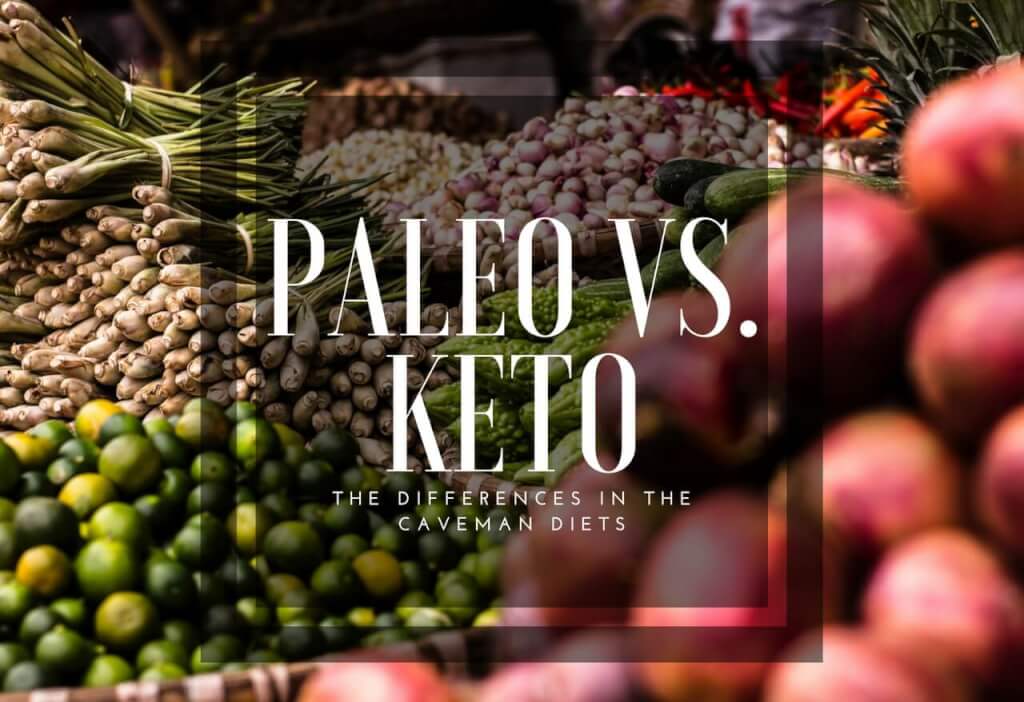
In the last two decades, the world of diet and general wellness changed drastically. Long gone are the days of eating eight or more servings of whole grains per day or sticking to the other rules of the traditional FDA food pyramid. Today, many people opt for diets with more protein, higher amounts of healthy fats, plenty of fruits and vegetables, while cutting back on grains and refined sugars.
Two modern approaches to dieting include the Paleolithic and ketogenic diets, more commonly known as just “Paleo” and “keto,” respectively. While similar, these diets have some distinct differences.
The Paleo Diet
Popularized by Loren Cordain Ph.D., the Paleo Diet focuses on an eating pattern that mimics the way our ancestors ate before the development of modern agriculture. The goal of the Paleo diet is to eliminate processed food from a person’s diet by the reduction or elimination of grains, refined sugars, and almost anything available on the inner aisles of a grocery store. Many believe that overly processed foods are responsible for many of our modern-day health epidemics, including heart disease, diabetes, and obesity because our bodies are not adequately adapted to eat these foods. Strict Paleo adherents eat only food our ancient ancestors ate, including meat, fish and other seafood, produce, eggs, nuts and seeds, and healthy oils (like those from flaxseed, olives, avocados, and coconuts). By cutting out processed foods, many people notice an automatic reduction in calories without any significant effort to weigh or measure their food.
The Keto Diet
Keto diets focus solely on achieving a state of ketosis. In ketosis, the body is no longer burns glucose (sugar) for energy, but instead uses ketones or molecules produced by fatty acids. The body produces ketones as an alternative energy source when glucose isn’t available. To reduce the body’s glucose levels, the keto diet aims to reduce carbohydrates (responsible for glucose production) close to zero as possible, while increasing fat consumption. On a keto diet, recommended foods include seafood, low-carb vegetables, dairy products, meat and poultry, eggs, unrefined oils and nuts, and seeds.
There are several approaches to the keto diet:
- Standard Keto Diet: Carbohydrates are reduced daily with little room for variation.
- Cyclical Keto Diet: Carbohydrates are reduced on most days, but raised periodically.
- Targeted Keto Diet: Carbohydrates are added to a diet at a specific time, usually around an activity.
Athletes who need to maintain athletic performance but want at least some of the fat-burning benefits of a keto diet often use cyclical and targeted keto diets. While all keto diets restrict carbohydrates, cyclical and targeted approaches allow more dietary freedom than the standard method.
Paleo vs. Keto Dietary Plan
Let’s look at some of the similarities and differences between the two approaches to diet.
Similarities:
- Fewer carbohydrates.
- More protein from animal sources.
- Little or no refined food.
Differences:
- Keto diets make less room for fruit.
- Paleo diets restrict dairy, while keto diets do not.
- Paleo diets heavily emphasize “quality” while keto diets focus on quantity and nutrient percentages
Can You Eat Both Ways?
Of course, you can! People on the Paleo diet will often eat fewer carbs just by reducing or eliminating refined foods. This alone may reduce carbohydrates enough to trigger ketosis. While both diets are restrictive, some people may find one diet easier to adhere to than the other. When selecting a diet, it is important to consult a medical professional and make sure you choose a diet that gives you the best chance to achieve lasting weight loss. Whichever diet you pick, there are plenty of paleo meal kits (like those from Green Chef, Terra’s Kitchen, and Sun Basket) and a growing number of keto-friendly meal delivery services and low-carb meal kits as well. These meal services will help you stick to your new eating plan!